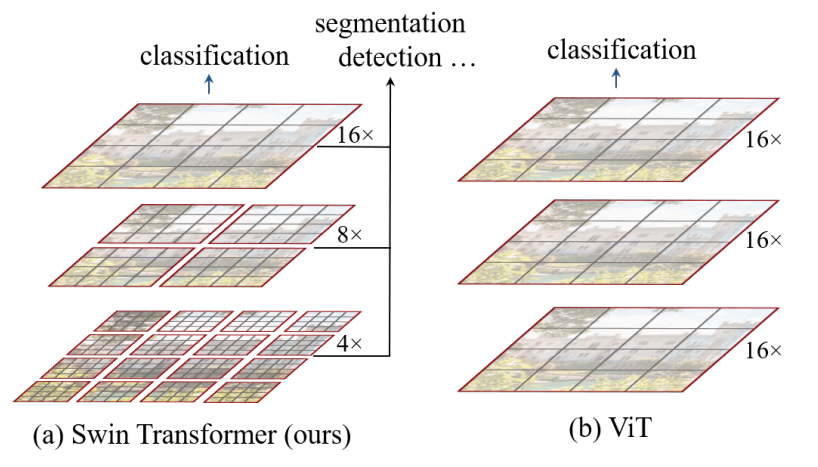🚀 Swin Transformer v2 (base-sized model)
A pre - trained Swin Transformer v2 model on ImageNet - 1k at 256x256 resolution, offering advanced image classification capabilities.
✨ Features
- Hierarchical Feature Maps: Builds hierarchical feature maps by merging image patches in deeper layers.
- Linear Computation Complexity: Has linear computation complexity to input image size due to local self - attention computation.
- General - Purpose Backbone: Can serve as a backbone for both image classification and dense recognition tasks.
- Improved Training Stability: Swin Transformer v2 uses a residual - post - norm method combined with cosine attention.
- Effective Transfer Learning: Employs a log - spaced continuous position bias method for better transfer to high - resolution tasks.
- Reduced Label Dependency: Utilizes a self - supervised pre - training method, SimMIM, to reduce the need for vast labeled images.
📦 Installation
No specific installation steps are provided in the original document.
💻 Usage Examples
Basic Usage
from transformers import AutoImageProcessor, AutoModelForImageClassification
from PIL import Image
import requests
url = "http://images.cocodataset.org/val2017/000000039769.jpg"
image = Image.open(requests.get(url, stream=True).raw)
processor = AutoImageProcessor.from_pretrained("microsoft/swinv2-base-patch4-window16-256")
model = AutoModelForImageClassification.from_pretrained("microsoft/swinv2-base-patch4-window16-256")
inputs = processor(images=image, return_tensors="pt")
outputs = model(**inputs)
logits = outputs.logits
predicted_class_idx = logits.argmax(-1).item()
print("Predicted class:", model.config.id2label[predicted_class_idx])
Advanced Usage
For more code examples, we refer to the documentation.
📚 Documentation
Model description
The Swin Transformer is a type of Vision Transformer. It builds hierarchical feature maps by merging image patches (shown in gray) in deeper layers and has linear computation complexity to input image size due to computation of self - attention only within each local window (shown in red). It can thus serve as a general - purpose backbone for both image classification and dense recognition tasks. In contrast, previous vision Transformers produce feature maps of a single low resolution and have quadratic computation complexity to input image size due to computation of self - attention globally.
Swin Transformer v2 adds 3 main improvements: 1) a residual - post - norm method combined with cosine attention to improve training stability; 2) a log - spaced continuous position bias method to effectively transfer models pre - trained using low - resolution images to downstream tasks with high - resolution inputs; 3) a self - supervised pre - training method, SimMIM, to reduce the needs of vast labeled images.

Source
Intended uses & limitations
You can use the raw model for image classification. See the model hub to look for fine - tuned versions on a task that interests you.
BibTeX entry and citation info
@article{DBLP:journals/corr/abs-2111-09883,
author = {Ze Liu and
Han Hu and
Yutong Lin and
Zhuliang Yao and
Zhenda Xie and
Yixuan Wei and
Jia Ning and
Yue Cao and
Zheng Zhang and
Li Dong and
Furu Wei and
Baining Guo},
title = {Swin Transformer {V2:} Scaling Up Capacity and Resolution},
journal = {CoRR},
volume = {abs/2111.09883},
year = {2021},
url = {https://arxiv.org/abs/2111.09883},
eprinttype = {arXiv},
eprint = {2111.09883},
timestamp = {Thu, 02 Dec 2021 15:54:22 +0100},
biburl = {https://dblp.org/rec/journals/corr/abs-2111-09883.bib},
bibsource = {dblp computer science bibliography, https://dblp.org}
}
🔧 Technical Details
The Swin Transformer's unique architecture allows it to build hierarchical feature maps and have linear computation complexity. Swin Transformer v2 further enhances the model with improvements in training stability, transfer learning, and reducing the need for labeled data.
📄 License
The model is licensed under the Apache 2.0 license.
| Property |
Details |
| Model Type |
Swin Transformer v2 (base - sized model) |
| Training Data |
ImageNet - 1k |

